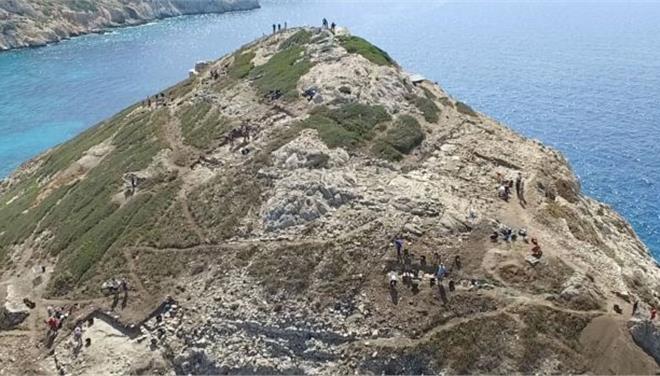The archaeological findings on the Cycladic Island of Keros are once again piquing interest as the dig has unearthed “a plethora of densely spaced constructions, much more impressive than we had believed until now, proving that it is one of the important locations in the Early Bronze Age,” according to an announcement by the Greek ministry of culture, regarding the dig at Daskalio.
Daskalio was covered almost exclusively with unique monumental structures, with stone brought from the island of Naxos, giving the impression of a grand, unified monument arising from the sea.
Under an impressive staircase that came to light near the lower retaining walls, there was discovered an advanced system of water drainage conduits, which indicates a multi-use architecture, carefully designed in advance.
Another aspect of the development of Daskalio was the employment of new agricultural practices, for cultivating olives and grapes.
Metallurgy, the most importance technology in the third millennium B.C., also played a significant role. There are clear indications all over the site that residents of Daskalio were experienced metallurgists.
“The new excavations show the nature of the installation at the cape of Daskalio. After the initial activities at the altar, as the offerings of broken marble idols and vessels dated between 2,700-2,400 B.C., an extensive construction programme was implemented at Daskalio, which transformed the natural rocky promontory into something that had the appearance of a human construct,” Michael Boyd, the Stavros S. Niarchos fellow in the Department of Archaeology at the University of Cambridge, told the Athens and Macedonian News Agency of Greece.
“Within the walls that were built, activities, knowledge and specialisations developed, which had to do with rare and strange materials, such as metals and obsidian. The residents appear to have been involved in various networks, working at different levels. Daskalio is a proto-urban centre, to a degree unprecedented for the islands, with which only Knossos in Crete can be compared,” Boyd said.




